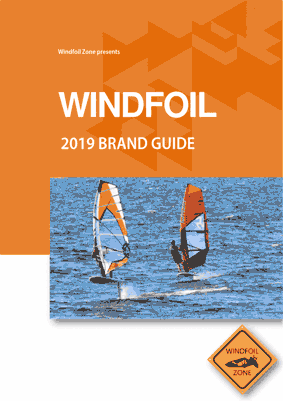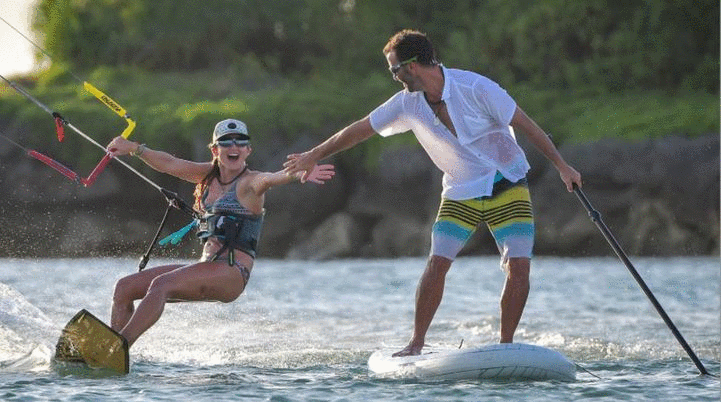Windsurf foiling tips: getting up and flying in light airs
- Tez Plavenieks
- Mar 17, 2018
- 3 min read
When you begin windsurf foiling there are a whole host of skills to learn and re-learn. What you think you know from windsurfing doesn’t always apply here. There are heaps of vids and pics of riders flying in stupidly low wind strengths, and it’s this aspect that mainly appeals with regards to windsurf hydrofoiling.
It’s not that simple, however, to start with. Plugging a 7m sail into a large volume board with a big dangly thing protruding from the tail and hoping for the best won’t necessarily yield the results you’re after. Here are a few tips to (hopefully) help you on your way.

Assuming you’ve got to grips with the basics of taking flight, controlling the board/foil and touching down without too many crashes (in moderate wind strengths) the next step is to take your foiling to lighter airs and make use of wind strengths around ten knots. You can go less but the lighter the breeze the trickier foiling can be, with a whole host of factors coming into play. For this article we’ll be sticking with 10 knots.
First thing is to make sure your sail is set correctly.
Many riders tend to crank on the down and outhaul, which unfortunately means your rig will be spilling power, when it’s power you need (initially). A flatter profile to your sail, with tighter leach, will ensure plenty of bottom end early flying grunt. Obviously there’s a sweet spot based on the conditions to hand. You may need to come in and tune your rig accordingly after a few runs.
Next up is positioning your mast foot.
For lower wind strengths shifting it back towards the tail will help with early take offs. Again, you may need to tweak settings as not all foils perform the same. Winds can also be fluky. Many miss that foiling really works best if you have consistency between gusts and flatter water, without too much chop, that can hinder forward momentum off the plane.
Lack of momentum = less speed = less chance of rising up onto your foil early.
Windfoil ABC with Tez: getting in the water, pumping, jumping and tacking.
Once comfortable with your settings it’s time to fly!
Starting off your feet will be across the centre line of the board. As you spot a gust approaching hook in and adopt a dynamic stance, slightly moving your feet outboard as you do so. Hands shouldn’t be too wide apart otherwise you’ll over sheet the sail and choke off any power.
Next is to begin pumping your sail.
Efficient pumping is a technique that should be nailed down well in advance of your light wind hydrofoiling practice. If you’re too heavy handed (or footed) you’ll unsettle the board and foil which will result in loss of speed and power. Foils work by slicing through the water efficiently. The smoother your pumping technique the better.
As you open and close the sail drive that downforce into your boom, through the mast and into the board (this is a windsurfing 101 skill that you should’ve learnt when getting to grips with planing).
Having a straight front leg, slightly bent back leg with arms and harness pulling down should ensure you’re generating efficient thrust.
In the sequence below, you can see all the subtleties of what’s being described above going on.

Pumping to plan
At the point you start to semi plane (or half foil) slip your leading foot into the front strap and continue pumping your rig. Your back leg should also be driving down into the foil.
The better you get the quicker you can utilise the front strap, which will give you more leverage and allow you to push against the foil. With increasing speed you can slot your back foot in and push harder through the tail to tease the foil up onto the plane.
If you work in harmony with your rig you’ll feel the board lift and begin to fly.

Level off your board!
Once in the air you’ll need to level off the board, by keeping weight forward, as you don’t want to over foil and crash. As your speed increases the foil should now be performing at its optimum and keeping you flying. A steady rig will also help. Keep looking upwind for gusts and react accordingly. Finally, claim it, you’re flying in wind speeds that keep many sailors on the beach!
Ultimately it’s all about practice, as we all know what practice makes…
Happy flying!
Tez Plavenieks is founding editor of Windsurfing UK Magazine.
Hit up the magazine and website to stay in the loop with windfoiling goings on, equipment tests and everything else from the colourful world of windsurfing.







Comments